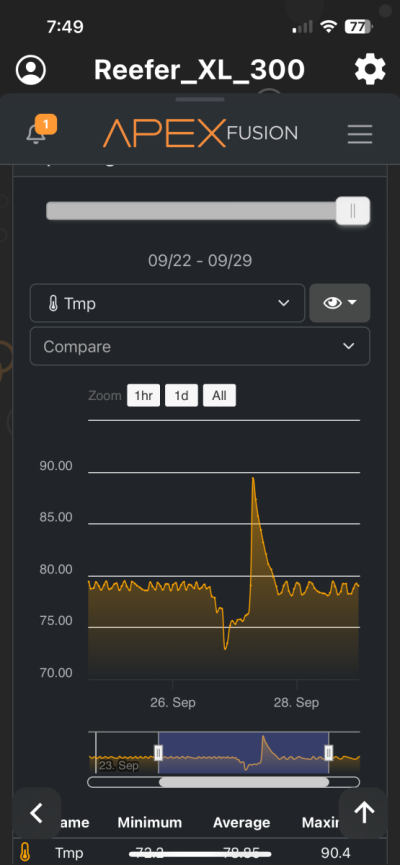You run a single 300W on a 250g system with a temp differential of 14dF?

That math does not work homie.
That’s fine. If I still had my Apex graphs I’d post them.
Then you could math your math and see you’re wrong homie
Edit: lookie here! A screenshot from October 30, 2022 showing the 1° difference with one heater on and one off. Sure glad you know more about my system than I do though.
Last edited:






















